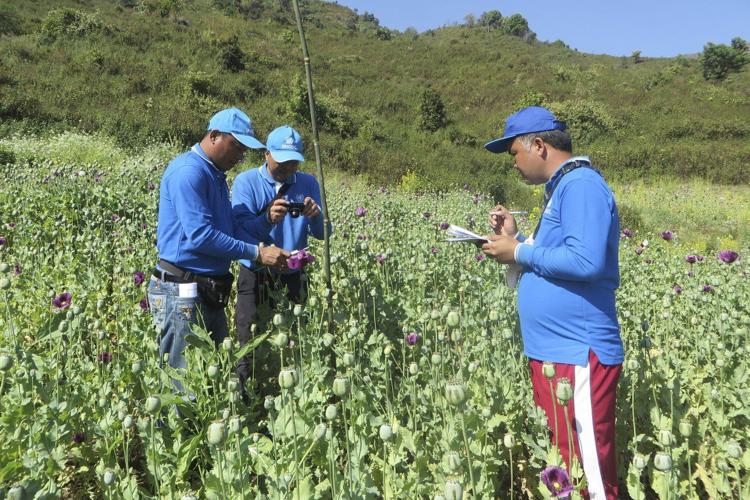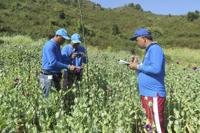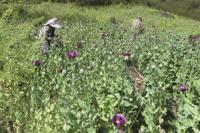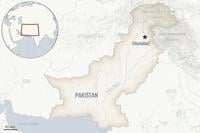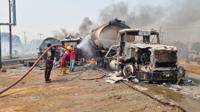BANGKOK (AP) — There has been a slight drop in the production of opium in Myanmar, the world’s biggest source of the illicit drug from which heroin is derived, experts from the United Nations said Thursday, while warning of strong prospects for future expansion of the deadly trade.
The Myanmar Opium Survey 2024 issued by the United Nations Office on Drugs and Crime says that after three consecutive years of growth, the area where opium is cultivated fell by 4% to 45,200 hectares (111,700 acres) and production decreased by 8% to 995 metric tons due to a 4% decline in opium yield.
UNODC announced last year that Myanmar had overtaken Afghanistan to become saying a after its 2021 takeover led to a 95% drop there in opium cultivation. Opium, the base from which morphine and heroin are produced, is harvested from poppy flowers.
Meanwhile, Myanmar registered growth in cultivation and production from 2021 through 2023, which UNODC attributed largely to
fostered by the crisis that arose after its army ousted the elected government of Aung San Suu Kyi in February 2021. Resistance to the takeover has led to what is now a .
Many farmers who had left opium behind during the period of relative stability before the military takeover returned to growing opium, Masood Karimipour, UNODC Regional Representative for Southeast Asia and the Pacific, said at a press briefing about the survey, which utilized both on-the-ground investigations and satellite surveillance.
The consequences of the supply shakeup remain unclear, UNODC experts said.
“We believe that at the moment the global supply chain for heroin has not been fully adjusted,” said Inshik Sim, a UNODC Research Officer, “And there is an implication that because there is a lack of heroin at the global level, somebody has to fill the markets and that may push the Myanmar opium poppy farmers to increasingly engage in opium poppy cultivation.”
In 2024, however, UNODC says the fighting at the heart of the instability intensified so much that it may have constrained production, due to factors including displacement and restrictions on movement, as appears to be the case in the opium-producing regions of Shan and Kachin in eastern and northern Myanmar.
That does not necessarily mean production has plateaued, said the U.N. experts.
“Troublingly, we are seeing indicators that the expanding and intensifying conflict in Myanmar is also a growing concern,” said Karimipour. ”So as the situation in Myanmar remains volatile and as the governance and humanitarian crises there continue, we may again see more people pushed into opium cultivation.”
“And we also note that the farmers have reported to us that their number one reason is just to put food on the table and that economic need will continue to intensify and worsen. So we don’t predict an alleviation in the motivation to continue to grow opium.”
"It’s very important for the international community to do what it can to support farming communities, to build resilience outside the opium economy, as the push factors that we’ve just discussed will continue," Karimipour said, adding that, “and it’s important to continue monitoring the situation in both Myanmar and Afghanistan as it relates to the global heroin supply chains.”
Northeastern Myanmar is part of the infamous “Golden Triangle,” where the borders of Myanmar, Laos and Thailand meet. The production of opium and heroin historically flourished there, largely because of the lawlessness in border areas where Myanmar’s central government has been able to exercise only minimum control over various ethnic minority militias, some of them partners in the drug trade.
In recent decades, after the region’s opium production had dropped, in the form of tablets and crystal meth supplanted it. It’s easier to make on an industrial scale than the labor-intensive cultivation of opium, and gets distributed by land, sea and air around Asia and the Pacific.

